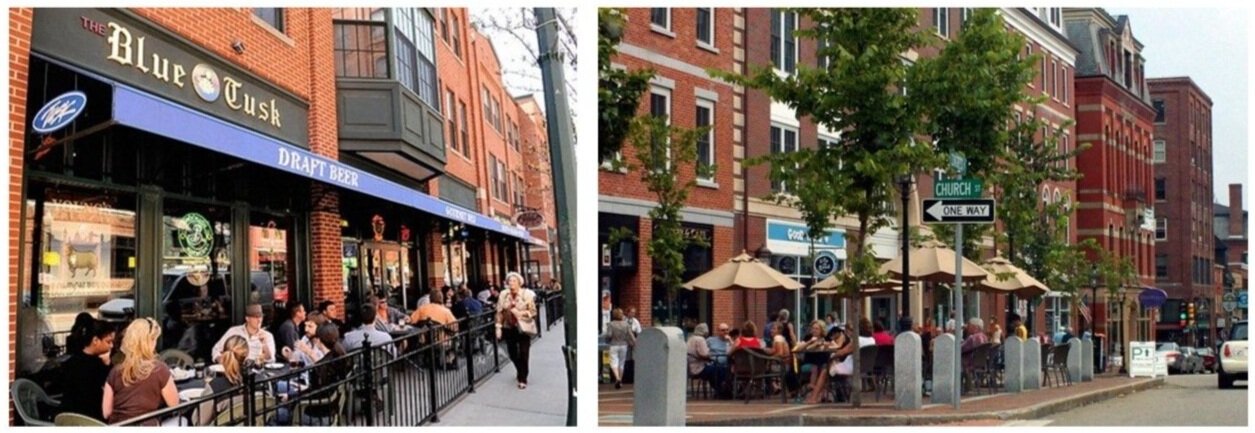The Power of Public Spaces
/By Michael A. Wang
The importance of urban public spaces has never seemed greater than during our current times, as we see people seeking out venues, not just for health and recreation but, to have their collective voice heard. According to Charlie McCabe with the Trust for Public Land, public funding for city parks hit $8B nationwide in 2019. While public investment in parks has shown a steady growth in recent decades, history reveals that periods of economic challenge, such as the Great Recession of 2008, can often divert funding from this critical piece of urban infrastructure. The National Recreation and Park Association [NPRA] notes that city spending on public parks plummeted in 2008 by 22%. Despite our current challenges, now is certainly not the time for disinvestment.
Bryant Park, NYC
The Trust for Public Land states that there should be “a great park within a 10-minute walk of every home, in every neighborhood, in every city across America.” Parks are a platform for equity and as cities begin to formulate urban design goals to address the new realities of the COVID – and, hopefully, post-COVID - world, it is essential that open space remains a priority. This will involve creative approaches to the financing and designing of new parks, as well as new theories for maintaining and repositioning existing assets. Key to the preservation of local parks will be the engagement and empowerment of members of the local community. Allowing a significant degree of self-determination can infuse creative placemaking through the integration of local assets and the celebration of unique cultural influences.
Outdoor dining enlivening a narrow street & occupying a “bump out” for dining
One could argue that investment in urban streetscapes will play an equally important role in shaping the economic and cultural well-being of our communities. Many cities are already focusing on expanding bicycle networks and creating more generous pedestrian environments, but this will be more critical than ever as outdoor dining and outdoor retailing seemingly become an essential component to the survival of local businesses. In denser urban contexts where tighter street sections may not allow as much flexibility, cities need to get creative and encourage, for example, the use of pedestrian mews and repurposed on-street parking spaces to provide necessary venues for businesses. The periodic, or permanent, closure of certain streets is another strategy worth exploring, as this can instantaneously create vibrant pedestrian-only environments. If utilized creatively, the changing geometries of a city grid can often create opportunities for small, uniquely shaped parklets.
Closing streets to vehicles can create lively pedestrian environments
Form + Place is currently working with the City of Springfield’s Office of Planning and Economic Development to re-envision the Northeast Downtown District, a neighborhood that was impacted by a natural gas explosion in 2012 that caused widespread damage. Despite being strategically located within walking distance of the downtown core, the new MGM casino and a revamped Union Station, the district has struggled to implement redevelopment. While there is burgeoning interest in integrating more market-rate residential density, the City is proactively contemplating steps to make key public realm improvements. UMass Amherst students in the Department of Landscape Architecture and Regional Planning’s master’s program recently completed an analysis of the district that led to a series of proposed interventions. A common theme that surfaced in every proposal was the importance of the public realm as the unifier of people and place. Building on this theme, Form + Place has implemented a multi-pronged approach to explore the feasibility of catalyzing mixed-use residential development on key parcels while, simultaneously, examining improvements to important commercial corridors, rethinking existing public spaces and contemplating the potential future integration of a major public park.
Narrowing a street in Springfield, MA to expand the pedestrian environment
UMASS Amherst LA&RP studio project linking Springfield neighborhoods with open space systems
Whether focusing on the connectivity of urban neighborhoods or providing flexible open spaces for communal use, it is essential that cities avoid disinvestment in the public realm, as this is a critical component of attracting private redevelopment dollars. There is no doubt that current challenges will cause some residents to retreat from the city, but dense and diverse urban communities will remain and continue to grow, as the world’s population shifts towards urban living. As such, evolution in the design of public spaces will be more critical than ever for supporting a desirable quality of life. Incorporating a variety of flexible, usable public spaces will be a key aspect of thoughtful community-building, but it is also worth noting, as Theaster Gates so eloquently posits in 9 Principles of Ethical Redevelopment, “Place is more about the people who inhabit it and the activities that they engage in than the space itself”.








